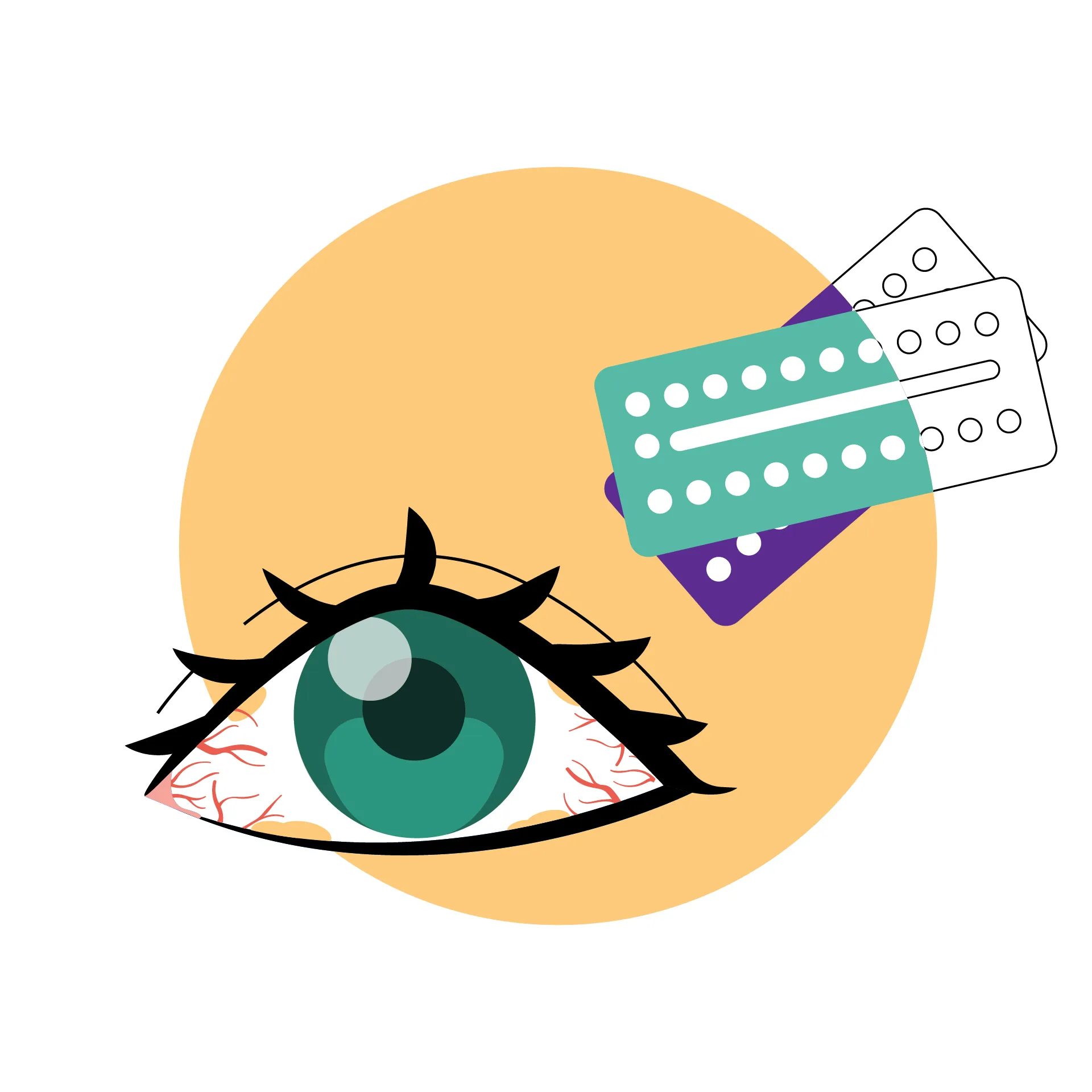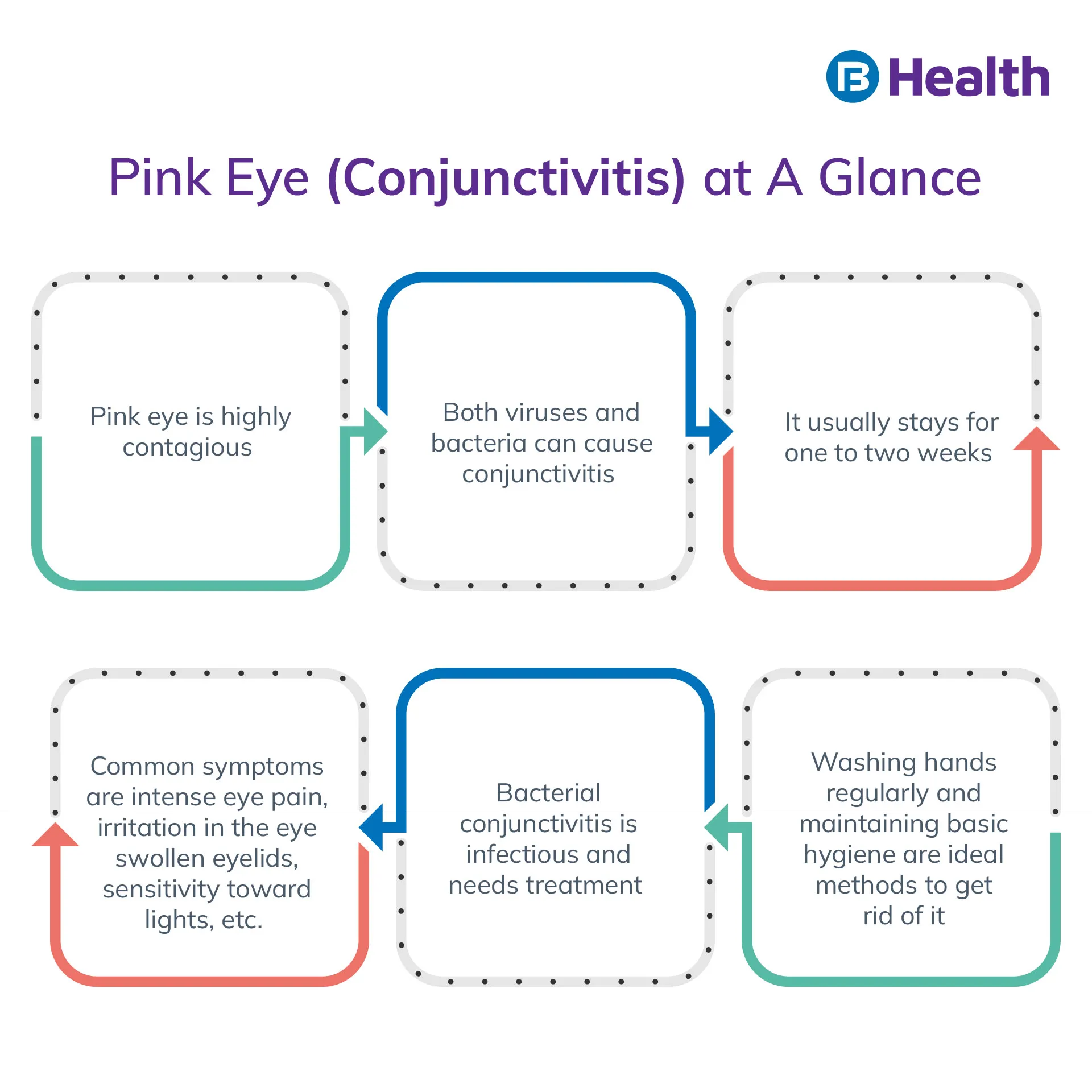Ophthalmologist | 8 min read
Conjunctivitis (Pink Eyes): Causes, Symptoms and Prevention
Medically reviewed by
Table of Content
Synopsis
Conjunctivitis refers to the inflammation of the conjunctiva. In the eye, the thin translucent tissue called the conjunctiva lines the inner surface of the eyelid and covers the eye's white component.
Key Takeaways
- Conjunctivitis are very common among kids
- There are several causes of conjunctivitis
- Conjunctivitis are highly contagious. Hence, prevention must be taken
What is Conjunctivitis?
Your conjunctiva is irritated when you have pink eye. It causes your eye to turn the classic conjunctivitis-related shade of red or pink. Kids get it all the time. While HPV can be highly contagious (e.g., in schools and day-care centers), it is rarely life-threatening. It's unlikely to harm your vision, especially if you catch it early and treat it effectively.
Pink eye usually goes away on its own when you follow your doctor's recommendations and take steps to avoid spreading the infection. Let us learn about conjunctivitis in detail.
Symptoms of Pink Eye (Conjunctivitis)
The following are signs and symptoms that you may have pink eye:
- Swollen eyelids
- An increase in tears
- Irritated eyes
- A blurry vision
- Increased light sensitivity
- Additional discharge from your eye
- Gritty sensation in eyes
- The white portion of the eye or the inner eyelid gets red
Cause of Conjunctivitis
Pink or reddish eye occurs when the blood vessels in the membrane concealing your eye (the conjunctiva) become inflamed, causing them to become more visible.
This inflammation is the result of:
- Viruses: The primary trigger of pink eye is a virus. Pink eye can be caused by viruses such as the cold or flu or COVID-19 [1].
- Bacteria: Bacterial conjunctivitis is commonly caused by Haemophilus influenzae, Staphylococcus aureus, Streptococcus pneumonia, and Pseudomonas aeruginosa.
- Molds, pollen, and other stimulants that cause allergies are examples of allergens.
- Shampoos, contact lenses, cosmetics, dirt, smoke, and, in particular, pool chlorine are irritants.
- Infections transmitted through sexual contact can be caused by bacteria (gonorrhea or chlamydia) or a virus (herpes simplex).
- An object has entered the eye.
- Babies with obstructed or partially opened tear ducts.
The term "pink eye" isn't recognized by the medical community. It is commonly understood by ophthalmologists to refer to mild conjunctivitis brought on by bacteria or viruses.
Some bacteria and viruses can cause contagious pink eye, which is easily spread from person to person but poses little threat if caught early. However, newborns should see a doctor immediately if this occurs because it could be an infection that could cause permanent vision loss.
Sometimes, conjunctivitis is caused by a sexually transmitted disease (STD). Rare but severe cases of bacterial conjunctivitis can be brought on by gonorrhea. If left untreated, vision loss is a possible outcome. Conjunctivitis is a symptom of chlamydia infection and can affect adults of any age. Pink Eye can be transmitted from mother to child through the birth canal if the mother has chlamydia, gonorrhea, or other bacteria present at the time of delivery.
Additional read: Eye Floaters: Symptoms, Causes, Types and Prevention
How Transmittable Or Contagious Is Pink Eye?
Both viral and bacterial pink eyes are highly contagious. A case of pink eye can quickly be passed on to others. A typical example is the spread of pink eye, which can occur if you touch your eyes after someone else has touched theirs, and then develop the disease yourself.
Most cases of pink eye are contagious for as long as the patient shows pink eye symptoms.
Conjunctivitis Diagnosed
Don't automatically attribute symptoms of redness, irritation, or swelling to pinkeye (viral conjunctivitis). Other possible conjunctivitis causes of your symptoms include blepharitis, sty, iritis, chalazion (inflammation of the gland along the eyelid), and seasonal allergies (an inflammation or infection of the skin along the eyelid). Not only are these diseases not contagious, but they also have no known cure.
Your eye doctor will inquire as to your pink eye symptoms, perform a thorough examination, and possibly collect fluid from your eyelid with a cotton swab for laboratory analysis. That will aid in detecting any bacteria or viruses that may have caused conjunctivitis, including any that are sexually transmitted. After that, your doctor can give you the appropriate Medication.
It's reasonable to question your doctor's diagnosis of pinkeye if you're concerned about:
- What about my pink eye? Is it contagious?
- How do I refrain from spreading it if it is contagious?
- Should I avoid public gatherings?
Conjunctivitis Treatment
Allergies:
If your conjunctivitis is triggered by allergies, treating your allergies and avoiding the allergens that trigger them should help. In the meantime, you can find relief from your symptoms with antihistamines. (But remember that oral antihistamines can exacerbate dry eye symptoms.) In addition, pink eye may be an allergy symptom, so it's essential to see a doctor if you think that's the case.
Bacteria:
Bacteria may have caused your pink eye, so you will need to take antibiotics. The inside of your eyelid may require applying eye drops or ointments three to four times daily for 5 to 7 days. Pink eye from gonorrhea or chlamydia is extremely rare, and in such cases, an oral antibiotic may be prescribed. For multiple days, you'd have to take pills. However, within a week, the infection should begin to clear up. Continue taking or applying the Medication as directed by your doctor, even if your symptoms have subsided.
Viruses:
Typical conjunctivitis causes include the same viruses that trigger the common cold. This pinkeye typically lasts from four to seven days, much like the average cold. Keep in mind that its spread should be avoided at all costs because of how contagious it potentially is. Viruses cannot be treated with antibiotics. Herpes simplex virus (HSV) pinkeye can be severe and require antiviral eye drops, ointment, or pills prescribed by a doctor.
Irritants:
Use water to flush the irritating substance out of your eye for 5 minutes to treat pink eye. Within 4 hours, you should notice an improvement in your eyesight. Conjunctivitis caused by contact with an acid or alkaline substance, such as bleach, requires prompt medical attention.
Your eye doctor may want to see you again in a few days to make sure the Medication is helping your pink eye.

Conjunctivitis Prevention
One of the best ways to avoid and stop the spread of conjunctivitis is to practice good hygiene.
- Keep your hands away from your eyes if you haven't washed them.
- Use soap and water to thoroughly and regularly wash your hands.
- If you need to wipe your face or eyes, use only clean tissues or towels
- Don't be that person who passes around their used eyeliner or mascara.
- Repeatedly cleaning the pillowcases will keep them fresh.
- If your doctor suspects that your contact lenses are to blame for your pink eye, they may advise you to try a different brand or type of lenses or disinfecting solution.
They may also advise you to stop using contact lenses altogether or to clean and replace them more frequently (or at least until your eye heals).
Avoiding contact lenses that don't fit properly or are worn for cosmetic purposes can also help reduce the likelihood of developing pink eye.
Additional read: Nearsightedness (Myopia): Causes, Diagnose and TreatmentHow Can Pink Eye Be Stopped from Spreading?
The following are some things you can do to protect your loved ones from the pink eye if you already have it:
- Be sure to maintain a regular hand-washing routine.
- Not everyone should use the same washcloth or towel.
- You should change towels and washcloths daily.
- You can put on eye makeup again after the infection has cleared up.
- Care for your contact lenses as recommended by your doctor
- If your doctor has prescribed medication, be sure to take it exactly as directed.
- Your child should stay home from school for at least 24 hours after beginning conjunctivitis treatment to reduce the risk of spreading the infection to other students.
Can Conjunctivitis (Pink Eye) Go away by Itself, Without Medication?
Pink eye, in its mildest form, usually doesn't require treatment and goes away on its own after a few days (for bacterial infections) to about 14 days (for viral infections) [2]. However, the techniques for relieving stress listed in the following question can be helpful.
Except in the cases of herpes simplex virus, varicella-zoster virus (chickenpox/shingles), or sexually transmitted diseases, viral causes of the pink eye do not necessitate treatment. Antiviral treatment may be recommended in such circumstances. When treating the bacterial pink eye with antibiotics, the duration of symptoms and the period of contagiousness are shortened.
Could Pink Eye (Conjunctivitis) Come Back?
Contracting pink eye again is a possibility, especially if allergies cause it. Your eyes may react every time you come into contact with the allergen. Bacteria or viruses can cause pink eye, and it is possible to reinfect yourself if you already have the disease.
You can take the following steps to reduce your risk of contracting contagious pink eye:
- Use hot water and detergent to clean all of your linens and towels. Alter your routine frequently.
- Don't put any makeup near your eyes until the infection clears up. Get rid of any old eye makeup you may have had and any makeup you used in the days leading up to the disease.
- Put on your glasses instead of your contacts. Keep your glasses spotless with regular cleanings.
- You should throw disposable lenses away. Remove and thoroughly clean all extended wear lenses and eyewear cases. For best results, only use a contact solution that has been sterilized. When handling contact lenses, it is essential to clean your hands first.
- Do not put eye drops intended for an infected eye into an uninfected eye.
The good news is that pink eyes or conjunctivitis are easily prevented and treated. Except in extreme cases, the pink eye usually goes away without treatment. However, your child's period of symptoms and contagiousness can be reduced with conjunctivitis treatment for bacterial or viral pink eye.
A warm compress can help ease any pain or discomfort caused by the healing process. The best action is to take precautions to prevent the spread of pink eye and future infections. Get a doctor consultation on Bajaj Finserv Health any time if you have any concerns or questions. If you want to protect yourself from any disease, you can avail of health insurance.
References
- https://www.ncbi.nlm.nih.gov/pmc/articles/PMC8411033/
- https://www.cdc.gov/conjunctivitis/about/treatment.html
Disclaimer
Please note that this article is solely meant for informational purposes and Bajaj Finserv Health Limited (“BFHL”) does not shoulder any responsibility of the views/advice/information expressed/given by the writer/reviewer/originator. This article should not be considered as a substitute for any medical advice, diagnosis or treatment. Always consult with your trusted physician/qualified healthcare professional to evaluate your medical condition. The above article has been reviewed by a qualified doctor and BFHL is not responsible for any damages for any information or services provided by any third party.



